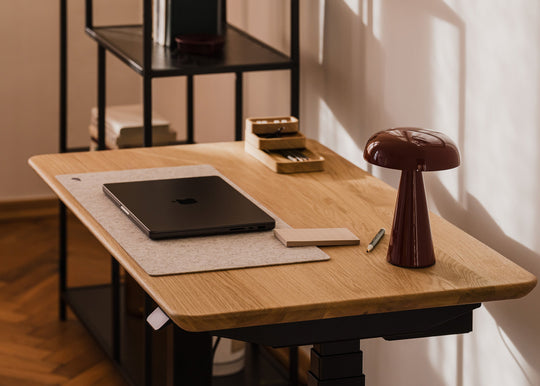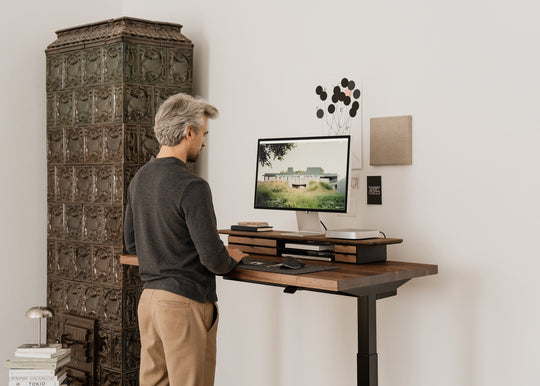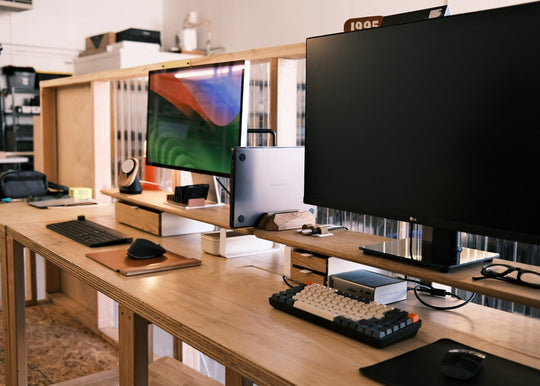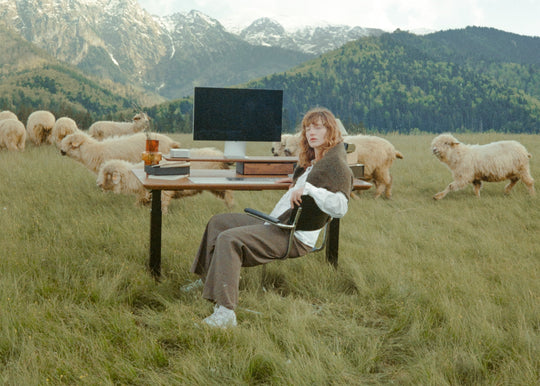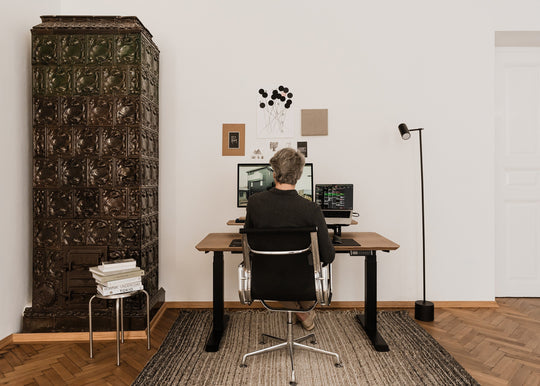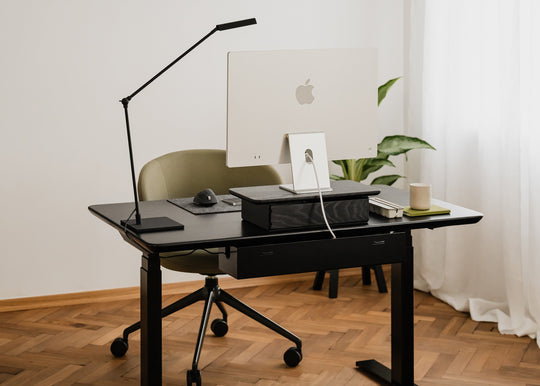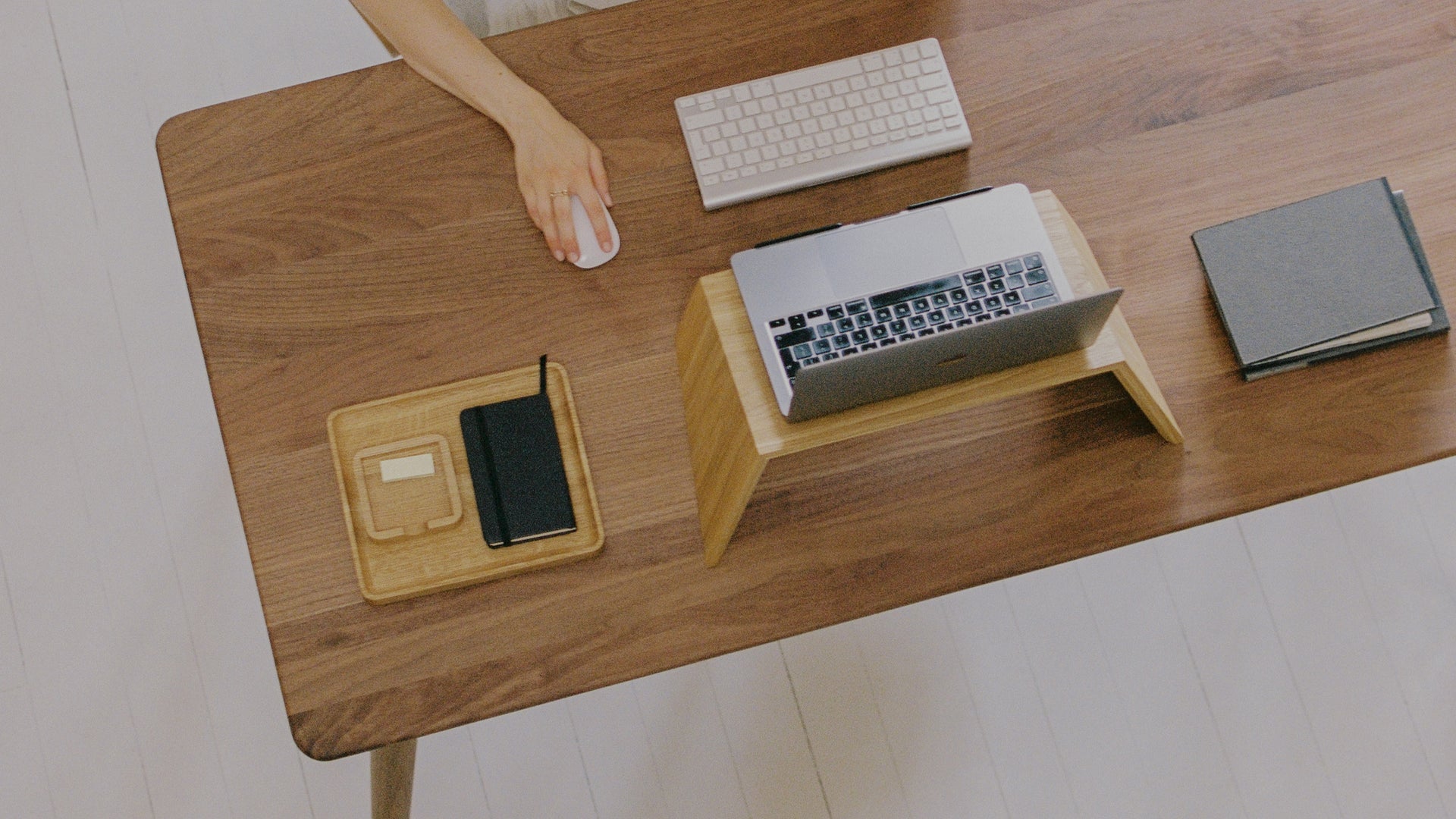
Ada Zielińska & Patryk Hardziej - Embracing the Past.
We’ve recently teamed up with Thisispaper Magazine and together we’ve met with two of the most talented, polish visual artists. Check out the result of this exciting meeting.
Post-War Polish design has been stirring up strong emotions for years. Delving into history can be painful for some, yet inspiring for others.
Graphic designers, illustrators, and curators, Patryk Hardziej and Ada Zielińska, immerse themselves in this realm on a daily basis, drawing inspiration and creating their own uncompromising works, while also conducting research into this fertile period of Polish design and graphic art. Their endeavors give us hope that this era will be admired in a new contemporary light.
Treating this historical era with delicacy, they give it a novel spin in their unique modern way. We had the pleasure of visiting them at their apartment, a space that serves purposes far beyond simply living. Nestled in the bustling heart of Gdansk's city centre, their Neo-Gothic townhouse is one of the rare structures that survived the World War II bombings. The building itself might provoke varied reactions, as Patryk humorously points out with a smile, saying that some might dub it "Old-school Gargamel" style. However, the more they learned about its history from the previous owner, the deeper they fell in love with it. Inside its walls, they have skillfully crafted a thriving creative oasis, a space they fondly refer to as their HOME-STUDIO-ARCHIVE.

Zuzanna: Let's delve into your inspirations and appreciation for the times of the Polish People's Republic (PRL) and the captivating atmosphere of the 1960s and 1970s. Your work beautifully incorporates many elements from that era. What fuels this love? Is it a combination of fascination and nostalgia, or are there other factors at play? Can you share your reflections on the origin of this love and what specifically attracts you to this analog period?
Patryk: Rather than directly replicating elements from that era, we find ourselves captivated by the analog character, craftsmanship, and underlying ideas of that time. Our illustrations exist in a different context altogether. For example, even the illustrations used for banks or gas stations in the 1950s and 1960s had a free, childlike style. Initially, our work had a different character, more abstract, with a focus on color and geometric forms. As we progressed, we felt a desire to reconnect with our roots, the place where we grew up and what we know. We wanted to explore our Polish tradition without any sense of shame or hesitation about our origin.
Ada: Personally, I believe there's a sense of nostalgia and a deep connection to something familiar from our youth that drives us to revisit that era. For me, it's especially connected to the music of the time, as Patryk also mentioned. Although we didn't grow up during the PRL, we belong to a generation that is aware of that period. We now encounter enduring signs on city streets, designed in that era, which have stood the test of time. As children, we were surrounded by that reality. I think the visual atmosphere of that time resonates subtly in our work. Of course, our aim is not to replicate it exactly, but to infuse it with our own personal touch.
Zuzanna: Can you recall the moment when your passion for the golden years of the 1960s and 1970s truly ignited and you started delving into that period intensely?
Patryk: The beginning of our passion for the golden years of the 1960s and 1970s and our intensive exploration of that period can be attributed to several key factors. One important moment was the discovery of a book of swiss author Adrian Frutigier’s called "Man and His Signs” where I encountered Karol Śliwka's project as an outstanding example of graphic design. It was a remarkable revelation to see a Polish designer being recognized and featured in an international publication.
Another significant influence was my diploma project, in which I chose to create a compact Polish logobook featuring 50 characters and 50 creators from a span of 50 years. The lack of available resources and publications on this subject prompted me to reach out to Karol Śliwka, Roman Duszek, and other designers who played significant roles during that time. My conversations with them opened my eyes to a whole new world of design that I hadn't been aware of before. Through these experiences, I gained more knowledge than years of formal education could provide. It became clear to me that the pursuit of uncovering the richness of the 1960s and 1970s was a journey worth undertaking. My diploma project became the catalyst for further immersion into this captivating era.

Zuzanna: To understand the phenomenon of the graphic design scene in Poland during that particular period, it would be helpful to explain why such remarkable creations emerged despite the challenging times.
Patryk: In the context of Poland's centrally planned economy, it's important to shed light on a few key aspects. Despite the challenges posed by propaganda and centralised decision-making, creators in Poland managed to make the most of limited resources. To become a designer, one had to graduate from the prestigious Academy of Fine Arts and join the esteemed Association of Polish Artists. This exclusive membership ensured that only the most talented designers had access to commissions. Although the number of designers was relatively small, their work exhibited exceptional quality. Unlike Western countries, where market-driven design prevailed, Poland fostered an environment of creative freedom. Designers were able to prioritize artistic value, blurring the boundaries between art and applied art. This unique situation stemmed from the rigorous training designers received and the absence of private clients, allowing them the liberty to express their creativity without constraints.
Ada: As you may imagine, living with someone who has a deep interest in this subject matter on a daily basis naturally influenced me, sparking my own fascination with the golden years of the 1960s and 1970s. To a certain extent, I became acquainted with those visionary creators and engaged in conversations with them, often exploring various topics beyond their work. The contact with these designers became intertwined with our daily lives, nurturing my own intrigue and passion for this captivating era.
Zuzanna: With your shift from Gdynia to Gdansk - you were previously running a studio integrated with a workshop, and now it's a combination of your home + studio + archives. I'm curious about what motivated this change. Especially considering how the pandemic caused many of us in the creative field to reevaluate our work's influences and processes. Could you discuss how this played into your decision?
Ada: It all started when our business began to naturally grow. For a period of approximately two years, we had the opportunity to rent a wonderful studio and workshop space in Gdynia. It was the perfect balance for us at the time. The studio provided ample room for our creative endeavours, and we even had the pleasure of inviting other talented individuals to collaborate with us on various projects. But when the pandemic arrived, we felt somewhat isolated. It made us reflect on what we wanted to do going forward. It was a good time to contemplate our plans for the future.
Patryk: We decided to prioritise safety—we wanted to have everything under one roof, our studio, living space, and archive—all within reach. Of course, it didn't mean completely isolating ourselves—meetings and movement are important. But the decision to merge two rented spaces into one, where we could operate on our own terms, proved beneficial for us. I started searching for a place that would meet our requirements—after all, our previous studio was 100 square meters and filled with items, projects, and archives. We chose Gdansk, mainly due to the difficulty of finding suitable space in Gdynia and the proximity to the Academy of Fine Arts where I work.
Ada: We decided we needed more peace. Previously, we lived in an old tenement building, constantly exposed to noise. It was important for us not to have neighbors above us. And when designing the apartment, our priority was to create a workspace and then a living space. Our apartment is divided into two sections. One is the studio area where we are now. The other section includes the kitchen and bedroom, separated from the studio. This allows us to maintain a proper balance.

Zuzanna: With such a large and well-divided space, do you find the layout contributes to your efficiency? Do you adhere to any daily rituals that help you shift into work mode more comfortably?
Ada: Definitely, the advantage is that the space is large because we can sit on the couch and take a breath. It's not like we go straight from bed to work. And as for rituals, we have a kind of daily routine where we have a transitional stage. We go downstairs, make ourselves coffee, sit on the couch for a while, calmly drink it, and then move to the work zone. This zone is spatially separated from the rest; we can close it off with glass doors. So yes, it works for us.
Patryk: I think it also has a lot to do with the layout of the apartment. In typical apartments, we have a collection of rooms with different functions: kitchen, bathroom, bedroom, hallway. It's different for us. The main part is open and is like the heart of the apartment. It's a space that has a height of 6.5 meters and around 70 square meters. From there, it branches off to the other rooms: the studio, bedroom, bathroom, guest room, kitchen. Thanks to this, when we enter the main space, we can decide whether we want to relax or work. It's our starting point.
Zuzanna: How do you choose items for your living and working space? What do you value the most? Surely, you have to be careful not to dominate the space with too many things.
Ada: We try not to clutter the work environment and space. That's why it's a delicate balancing act between what is important to us - like books, of which we have quite a few and use regularly - and things that are like artefacts. We have to arrange them in space thoughtfully so that they're not just decorations. We want them to have their place, to be able to "exist," but at the same time, we don't want them to dominate the space. As for these artefacts, it's no longer the case that we buy something just because we like it and it looks nice. We try to choose items so that they have their place and actually serve their purpose. If we want to bring an object into our home, it usually has its own story - for example, we brought it from a trip or excursion.
Patryk: We also don't want to order random things from the internet.
For us, it's important that our choices are conscious and that the objects have some context and bring their own story.
Zuzanna: You've recently invested a considerable amount of your personal time in renovation. How do you manage to find time for rest and regeneration amidst intense periods of work? I can imagine this phase must have been quite demanding for you.
Ada: For a while, we were living and working alongside the ongoing renovation. It was a source of stress for us but also an important experience. The pandemic definitely added additional pressure. In the past, we used to go on vacations every year, especially in winter... It was a moment of reset and chill.
It was a time for regeneration when we gathered strength after a challenging year and then started the New Year with fully charged batteries. However, lately, these trips have become rare - various factors, such as time or the fact that we focused on the renovation, limited us. Consequently, moments of rest were sporadic and shorter. Despite being close to the sea, we didn't always have the opportunity to enjoy it, although we love going there, especially in the off-season. For us, a simple walk can be a pleasant form of relaxation.
And this year, for the first time, we plan to take a month-long vacation. It's an experiment for us that will start soon. We are curious to see how we will manage - such a long vacation is not for everyone. It's a challenge for us, especially considering that we are accustomed to constant action and work. We have never had such a long vacation, but short city breaks have always helped us and proved beneficial in our workflow.
Zuzanna: Recently, you both managed an intense project with Gdynia Design Days. Do you often operate as a duo? How do you strike a balance between your personal relationship and a daily professional collaboration?
Patryk: For most of the year, we usually work separately on our projects. We had to learn how to collaborate because professional work is different from personal life. In the context of work, we often delegate tasks, divide responsibilities. In our personal life, we try to think about what we can do for the other person. But at work, I can't afford to do that because I would quickly lose track of my responsibilities. That's why we established that each of us has our own tasks, clients, budgets... Each of us has our own zone. But a few times a year, when a bigger project comes up, we join forces. However, it's not an equal division - it's not easy to divide the work evenly. Often one of us takes on more responsibilities. In the case of GDD this year, it was Ada because her concept was ultimately accepted.
Ada: The proportions are always different. Sometimes we work together on a project for the National Museum, other times it's a film or a festival... We share the responsibilities. Sometimes I'm in charge of communication, and then more work falls on me, and other times Patryk takes it upon himself, which means he has more to do. Usually, we navigate through it all..

Zuzanna; Each of you brings your own distinct experiences and creative perspectives to the table. It's remarkable to witness how well you understand each other…
Ada; It all comes down to trust…
Patryk: Trust is crucial. We know our working styles, we know what to expect from each other. We are aware of our roles, which allows us to trust each other. Our direct communication with clients is crucial for effective relationships and collaborations.
Ada: I find personal engagement to be essential. Building connections with individuals is vital in my work. By getting to know people, establishing a strong foundation as partners is crucial for a fulfilling creative process. I prefer not to simply carry out assigned tasks, so we selectively accept projects that genuinely interest us. It's crucial for us to feel a sense of accomplishment, as it simply is a great motivator for me.
Zuzanna: And since we're talking about partnership and your music collaborations - it seems that such artistic projects are unique, where two very creative minds have to work together. How did your path in music projects begin?
Ada: We have always been closely connected with people involved in music. Music has always been present in both mine and Patryk's lives, and it has influenced my creativity. My first commissions were collaborations on intimate concerts in Warsaw. I started doing it during my studies. I started with hand illustrations, then collage, and typographic variations. It allowed me to develop what I can now call my style. And I believe it helped me refine the musical character of my works. The same aesthetics, sometimes very abstract, just worked because it was close to me. It's important to realize that music is intangible and concrete. We don't always have to represent it in a literal form that depicts something; it can be an abstraction - a form that is completely fluid and natural.
Sometimes it requires us to think about how our work should look and reflect the character of the other person. It can be a process of colliding ideas.
The ultimate goal is the satisfaction of both parties. I can't imagine doing something that we don't like or seeing that the end result is unsatisfactory. That's why I like getting to know people because I immediately feel with whom I want to collaborate.
This partnership collaboration is important to us - we want to do something that is interesting to us, but above all, there is always a person on the other side. We design for them.
Zuzanna: And Patryk, how do you feel about designing for music?
Patryk: Creating for musicians holds a captivating allure. The intersection of my visualization with their music is a unique experience. We have a combination of illustration and graphic design, taking into account practical aspects like song titles, copyright, and so on, while still making everything aesthetically pleasing and creating a cohesive image. My favorite projects are those for jazz bands. In jazz, there's always room for experimentation, which often allows me to experiment as well. In those album covers, I often do something unconventional, like turning a barcode into an active compositional element that could end up on the front cover…
In today's times, with the popularity of platforms like Spotify, the album cover loses some of its significance. On the one hand, it's not very visible, but on the other hand, it becomes the interface to the music. Often, I choose music on Spotify based on the album cover. Of course, we also design vinyl records. A physical project is something more - you can touch it, choose the paper, the ink, and tell a broader story. When someone buys a physical edition, they discover a new world that cannot be experienced online. That's why I love creating tangible projects.
The focus of the archive was never meant to be the artefacts themselves - it's about the people who created them.
Zuzanna: Could we loop back to discuss your archive? We've been mentioning it throughout our conversation, but we haven't delved into its origins. Where do you uncover these tucked-away treasures, like hand-painted logos? I even stumbled upon a hint suggesting they originate from a basement…
Patryk: It all started with getting to know Karol Śliwka, Roman Duszek, Jerzy Trojder, Ryszard Bojar, and Ada discovered Krystyna Töpfer. When we talk to these people, we stop focusing solely on the objects and start delving into their creative process and the context in which they were created. By showing genuine interest, we were increasingly drawn into their worlds. We often visited Karol Śliwka, who lived in Skoczów, near the Czech border. Those visits were fascinating and filled with interesting stories. It's a part of Polish visual culture that we have at our fingertips, but it's not described in encyclopaedias. We can directly ask the creators themselves. For example, how the logo for Pekao Bank was created? How did they leave their mark on the Institute of Mother and Child?
It turned out that our own visual memories, which our parents had, were often designed by a handful of outstanding creators who were designing everything at that time.
Zuzanna: These marks are ever-present in our reality.
Patryk: For example, Karol Śliwka designed both the logo for Pekao Bank and for the General Directorate for National Roads and Motorways, as well as the packaging for Wedel. I studied from books that had the logo of the Polish Publishing House with Śliwka's mark, and the "Jedyna" chocolate from Wedel is still being produced. And when it comes to "LOT" the sign of Polish Airlines - it's a real gem! But this was made by Roman Duszek (co-created with Andrzej Zbrożek) who also designed the Fiat 126p logo and the famous "Krówka KIRI” (co-created with Rene Mettler), the logo of La Vache qui Rit - a French cheese producer.
We often had these conversations over 'cake,' asking Śliwka direct questions about how certain signs were created. He would share with us some of the most valuable and private perspectives, as well as background stories…
Zuzanna: So you had a meeting with "living history."
Patryk: Exactly. We got to know these creators, organised exhibitions for them, published books, acquired their archives, and even established a Karol Śliwka foundation. Now we have plans to make everything available online. We also dream of creating the Polish Design Museum or the Museum of Polish Logo in the future. We see enormous potential and creativity in this area, so it's a natural direction for our development.
Ada: It would be wonderful if our generation could see these achievements. We want to show that people don't just go to Berlin to see Bauhaus, but also to Poland to delve into the history of Polish design based on signs and other elements. Of course, museums have their collections, but when it comes to graphic marks, we have a lot to offer and say.

Zuzanna: I'm intrigued by the process behind establishing the Karol Śliwka Foundation. Could you share how you went about acquiring these unique pieces, and how did this collection inspire the creation of a foundation that advances the legacy of Polish marks?
Patryk: The things we have come from our relationships. We wanted to somehow repay these creators for everything they shared with us by organising exhibitions, lectures, publications, and other activities promoting their work. For example, after Karol Śliwka passed away in September 2018, right after his exhibition, we decided to establish a foundation that took over his archive. That was the first impetus for this undertaking, which came from Jerzy Trojder, the creator of the famous "jaskółka" - the sign of Polish fashion. That's when I realised that these creators are already quite old. Together with Karol Śliwka's daughter Małgorzata Śliwka-Cichoń, we established a foundation to preserve their legacy. When it turned out that we were creating a certain ecosystem, other creators joined us, deciding to donate their works to the foundation.
This way, we operate in a structured manner, gaining the trust of creators and institutions while giving a second life to things that have been stored in basements for the past 30 years.
Ada: Although this process is complicated and time-consuming, we would love for it to progress faster. However, we know that such endeavours require time. This archive is an ongoing process. Our work stems from pure passion, without any commercial motives. We're determined to prevent this work from fading away;
We want to show others this history, and above all, we want them to witness what we've experienced through our own eyes.
Endnote: This article is a part of our ongoing collaboration with Thisispaper Magazine and it was originally published on Thisispaper.com.

